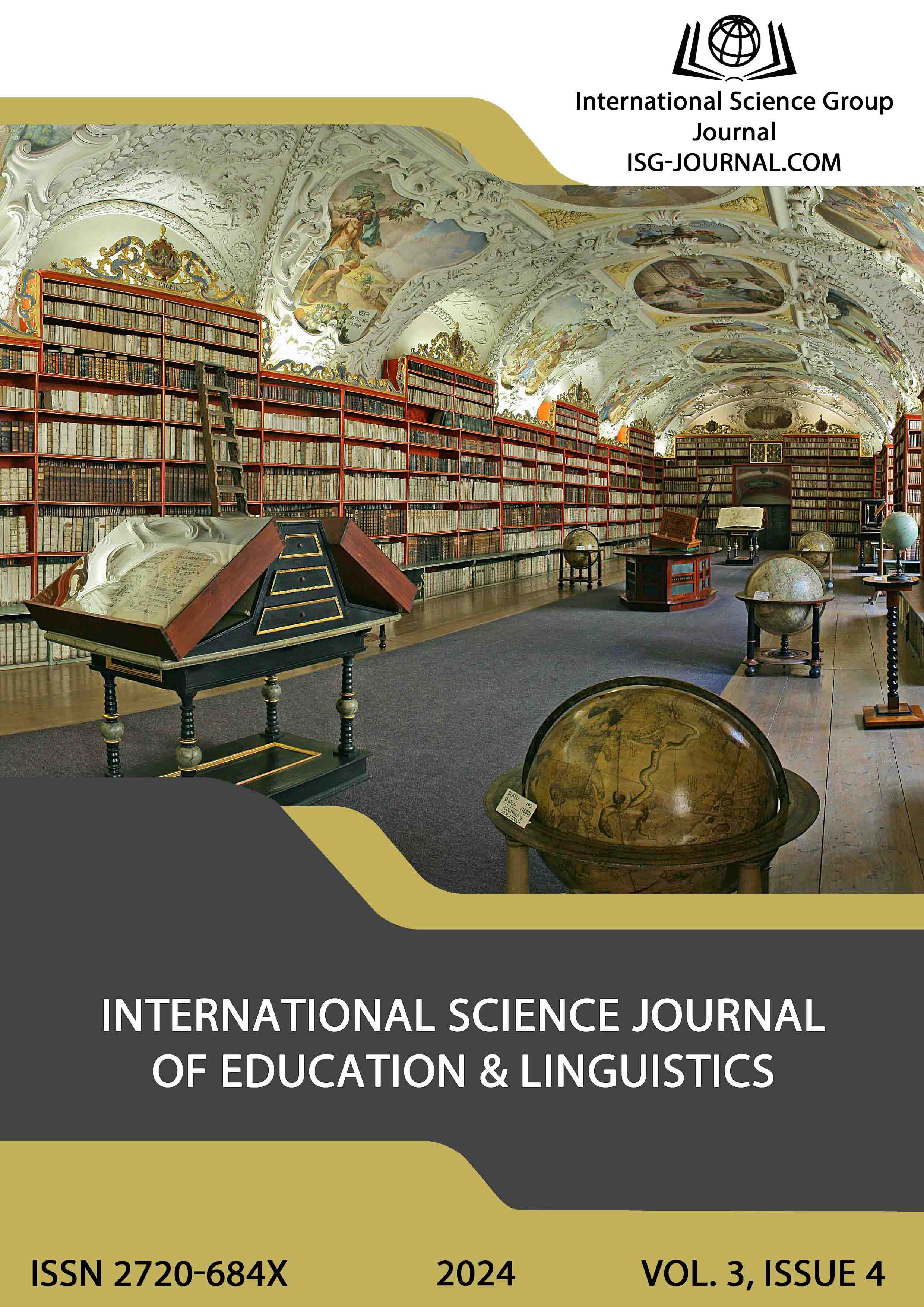Semantics of "authorial" intonation of artistic text
DOI:
https://doi.org/10.46299/j.isjel.20240304.06Keywords:
intonation, author's image, author's intonation, textual content, acoustic intonation, semantics of feeling, semantics of action, rhythm, presence effect, meaning effectAbstract
In the article, intonation is considered broadly – as a category of aesthetics and poetics. The "author's" intonation is understood as the primary "author's" intention, which in the perception of the recipient generates all the material of the text and all types of its acoustic intonation. The quotation marks in the word "authorial" indicate a functional, dynamic approach to the study. The study of the concept of "authorial" intonation, which turned out to be close to the concepts of V.V. Vinogradov's author's image and M.M. Bakhtin's emotional and value tone, made it possible to develop the concepts of these scholars regarding the semantics of the phenomenon under study – the semantics of feeling (present in the concepts of author's image and emotional and value tone) was supplemented by the semantics of action. Observations of the semantics of feeling and the semantics of action in a literary text have led to the conclusion that feeling and action are realised in the process of perception of a literary text by the recipient in a different sequence – feeling, or emotion, appears in perception, is felt, immediately from the first words of the text, and to understand the semantics of action it is necessary to "reach the end of the text". In addition, in the terms of H.U. Humbrecht, the semantics of feeling and the semantics of action function in different planes of perception – the semantics of feeling associated with rhythm is the "effect of presence", and the semantics of action associated with the development of the plot is the "effect of meaning".References
Степанченко, И. И. (2022). Парадигматический анализ лексики художественного текста в функциональной лингвистике: Киев, 206.
Польшикова, Л. Д. (2002). Интонация как проблема поэтики: Москва, 192.
Crystal, D. (1969). Prosodic Systems and Intonation in English: Cambridge, 381.
Crystal, D. (1975). The English Tone of Voice: Essays in Intonation, Prosody and Paralanguage: London, 198.
Crystal, D. (2003). The Cambridge Encyclopedia of the English Language: Cambridge, 506.
Черемисина-Ениколопова, Н.В. (1999). Законы и правила русской интонации: Москва, 520.
Торсуева, И. Г. (1979). Интонация и смысл высказывания: Москва, 109.
Хромов, С. С. (2014). Семиотическая сущность интонации. № 2 (21): Волгоград, 108-118.
Бахтин, М. М. (1994). К философии поступка: Киев, 383.
Бахтин, М. М. (1986). Эстетика словесного творчества: Москва, 447.
Бахтин, М. М. (1978). Автор и герой в эстетической деятельности. Вопросы литературы №12, 269-310.
Есин, А. Б. (2000). Принципы и приемы анализа литературного произведения: Москва, 248.
Шмелева, Т. В. (1998). Текст сквозь призму метафоры тканья. Вопросы стилистики №27, 68–74.
Выготский, Л. С. (1999). Мышление и речь: Москва, 352.
Чехов, М. Про техніку актора. Театр та акторська майстерність / Біла ворона. – Эл. ресурс: https://voronna.kiev.ua/mihail-chehov-o-tehnike-aktera/
З С. Єсєніна (Отговорила роща золотая) переклад. – Ел. ресурс: https://maysterni.com/publication.php?id=70776
Гордеева, Т. Ю. (2014). Анализ «интонационного хронотопа» в аспекте классификации певческих культур. Теория и история культуры №3 (54). – Эл. ресурс: https://cyberleninka.ru/article/n/analiz-intonatsionnogo-hronotopa-v-aspekte-klassifikatsii-pevcheskih-kultur/viewer
Лотман, Ю. М. (1970). Структура художественного текста: Москва, 384.
Гумбрехт, Г. У. (2006). Производство присутствия: чего не может передать значение. Пер. с англ. С. Зенкина: Москва, 184.
Downloads
Published
How to Cite
Issue
Section
License
Copyright (c) 2024 Maria Myroshnychenko

This work is licensed under a Creative Commons Attribution 4.0 International License.





